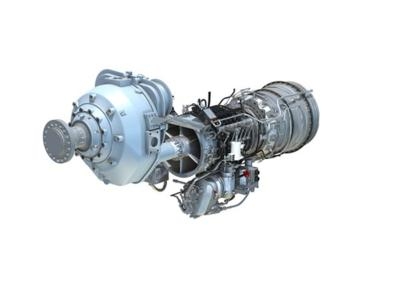Wed, Dec 29, 2021
AD 2022-01-04 Prompted By An In-Flight Shutdown (IFSD) Of An Engine
The FAA is adopting a new airworthiness directive (AD) for certain Rolls-Royce Corporation (RRC) AE 2100D3 model turboprop engines.

This AD was prompted by an in-flight shutdown (IFSD) of an engine and subsequent investigation by the manufacturer that revealed a crack in the 3rd-stage compressor wheel. This AD requires replacement of the affected 3rd-stage compressor wheel. The FAA is issuing this AD to address the unsafe condition on these products. This AD is effective February 2, 2022.
Supplementary Information: The FAA issued a notice of proposed rulemaking (NPRM) to amend 14 CFR part 39 by adding an AD that would apply to certain RRC AE 2100D3 model turboprop engines. The NPRM published in the Federal Register on October 12, 2021 (86 FR 56660). The NPRM was prompted by an uncommanded IFSD of a RRC AE 3007A1 model turbofan engine installed on an Embraer S.A. model EMB-145 airplane (marketed as ERJ-145), while conducting a revenue flight.
The manufacturer's investigation of this incident revealed that the IFSD resulted from a low-cycle fatigue crack in the dovetail slot for the blade attachment in the 3rd-stage compressor wheel, causing one 3rd-stage compressor blade to release. The crack initiated in the dovetail slot due to a sharp corner in the wheel slot geometry. The broaching process was identified as the cause of the crack and parts from this manufacturing lot required removal from service.
In response to this event and the manufacturer's subsequent investigation, the FAA issued a final rule; request for comments, AD 2020-16-13 (85 FR 45769, July 30, 2020), requiring replacement of certain 3rd-stage compressor wheels installed on RRC AE 3007A, AE 3007A1, AE 3007A1/1, AE 3007A1/2, AE 3007A1/3, AE 3007A1E, AE 3007A1P, and AE 3007A3 model turbofan engines before the 3rd-stage compressor wheels accumulate a specified number of cycles. The actions required by AD 2020-16-13 address engines that experienced high stresses at the 3rd-stage compressor wheel location and accumulated cycles at a high rate. In the NPRM, the FAA proposed to require replacement of certain AE 2100D3 3rd-stage compressor wheels that were produced in the same lot as the AE 3007 3rd-stage compressor wheels identified in AD 2020-16-13, before they accumulate a specified number of cycles. The FAA is issuing this AD to address the unsafe condition on these products.
More News
From 2023 (YouTube Edition): "Ain’t Your Daddy’s Super Cub”—Don Wade Co-owned by Don and Ron Wade—the former of Don’s Dream Machines, a storied >[...]
Pilot-Rated Passenger Reported That The Pilot Did Not Adequately “Round Out” The Landing Flare And The Airplane Bounced And Yawed To The Right Analysis: The pilot state>[...]
Dead Reckoning Dead reckoning, as applied to flying, is the navigation of an airplane solely by means of computations based on airspeed, course, heading, wind direction, and speed,>[...]
Aero Linx: Lake Amphibian Club This website is created and sponsored by the Lake Amphibian Club, to help spread the word about these wonderful, versatile amphibians that can land j>[...]
“I am deeply honored to be sworn in as NASA administrator. NASA’s mission is as imperative and urgent as ever — to push the boundaries of human exploration, ignit>[...]
 Classic Aero-TV: In Praise of Alabamas Patriot Aircraft USA
Classic Aero-TV: In Praise of Alabamas Patriot Aircraft USA NTSB Final Report: Cirrus Design Corp SR22
NTSB Final Report: Cirrus Design Corp SR22 ANN's Daily Aero-Term (12.21.25): Dead Reckoning
ANN's Daily Aero-Term (12.21.25): Dead Reckoning ANN's Daily Aero-Linx (12.21.25)
ANN's Daily Aero-Linx (12.21.25) Aero-News: Quote of the Day (12.21.25)
Aero-News: Quote of the Day (12.21.25)



